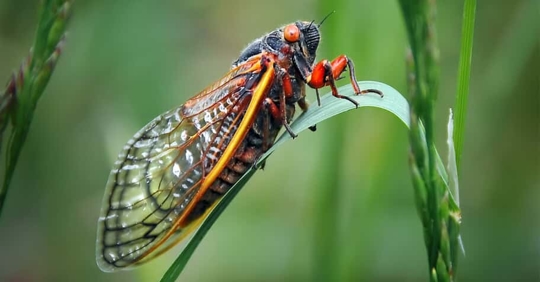There’s no avoiding it — the largest swarm of periodical cicadas is set to surface any day now. Your first instinct might be to contact your pest control guys but first, find out how they will affect you this season.
Those who were around for the last emergence of hibernating cicadas may think they know what to expect, but this year’s brood is estimated to contain as many as 1.5 million cicadas per acre. Our team is taking you through what to know and what you should expect from Brood X.
What areas will Brood X affect?
The identified hotspots for the latest emergence span across many states, including most of Indiana and Maryland, Northern Virginia, Georgia, Western Ohio, and Southern Pennsylvania.
When will Brood X emerge?
Scientists expect the brood to surface in May, though in reality, they will start to show up anytime after the soil reaches an average of 65 degrees. Depending on where they are located, periodical cicadas could show up as early as late April and live until mid to late July.
Can cicadas harm me?
Cicadas aren’t inherently dangerous to humans as they don’t possess stingers like wasps and can’t bite like spiders. Their feet do have spiky bristles that can prick your skin if handled roughly.
What’s the difference between annual cicadas and periodical cicadas?
As the name suggests, annual cicadas show up every year around the same time. If you’re at all familiar with cicadas, you likely recognize them by their loud noises. But that’s pretty much where the resemblances stop.
What do periodical cicadas look like?
Periodical and annual cicadas look very different from each other. While annuals have green bodies, periodicals have black bodies and bright red eyes. Their wings are clear and they can grow to have a wingspan of three to four inches across.
Periodical Cicadas Lifespan
Did you know cicadas live longer than any other insect? Annual cicadas have a lifespan of two years — which is nothing compared to the lifespan of their periodical cousin. Periodical cicadas emerge in either 13 or 17-year cycles. The last cycle of periodical cicadas showed up in 2004 to reproduce and populate the next generation — Brood X.
Periodical Cicada Reproduction
Periodical cicadas are named because of how long they develop underground. As mentioned before, the current brood was born in 2004 and settled underground to develop into maturity. After they emerge, they will live for four to six weeks to reproduce and create the next generation.
Male cicadas live on the shorter side of the spectrum — they have anywhere from two to four weeks to find a mate. A female cicada can lay as many as 600 eggs, which is why Brood X is so large. After six to 10 weeks, the eggs hatch, and nymphs drop to the ground to burrow and develop until the next 17-year surfacing.
Do I need pest control for cicadas?
Although they don’t pose any direct threat to humans, cicadas can harm saplings and other delicate trees, such as fruit trees. Female cicadas lay their eggs in pencil-thin branches of trees. This doesn’t cause an issue for mature trees, but for young saplings and fruit trees, the weight of the eggs could cause the branches to snap — harming the tree’s overall development.
Knowing this, it’s important to state that cicadas don’t pose any large threat to plant life overall. Pest control solutions typically work best on bugs with predictable patterns of behavior — since cicadas lifespan is so short, it’s recommended to hold off on planting new trees or protect young saplings by covering them with mesh wiring and cheesecloth. If you use store-bought insecticides in an attempt to kill cicadas, it could disrupt the food chain of local wildlife that feed on cicadas.
Enviro-Tech Pest Services is here to help you mitigate any pest problems you may have in your home or business. Contact our team with questions or schedule an appointment at (800) 836-3089.

